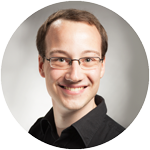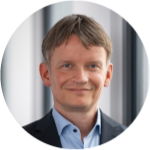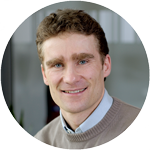

(Forschungszentrum Jülich, Head of Department)
Transparent Passivating Contact for Crystalline Silicon Solar Cells Approaching Efficiencies of 24%
Monday, April 19, 09:50 (CEST)
The talk will present a transparent passivating contact (TPC) consisting of a thin SiO2 followed by a hydrogenated nanocrystalline silicon carbide (nc-SiC:H(n)). The best TPC solar cell reached a certified efficiency of 23.99%. The passivation mechanism and the working principle of TPC are investigated. Optical loss analysis is also presented to address the superior of TPC in transparency.
__________________________________________

(ISFH, PhD candidate)
Understanding Light-Induced Degradation Effects in Ga-doped Cz-Si and B-doped FZ-Si Materials
Tuesday, April 20, 16:15 (CEST)
We examine degradation phenomena on fired Ga-doped Cz-Si and B-doped FZ-Si as a function of illumination intensity and temperature. The observed lifetime degradation effects are qualitatively similar and the extent of degradation increases with increasing temperature. During prolonged illumination at elevated temperature (135 °C), we observe a permanent regeneration of the lifetime, whereas at temperatures close to room temperature (36 °C), the defect deactivation is only temporary.
__________________________________________

(Meyer Burger, CEO)
Meyer Burger – Evolution from an Equipment into a Solar Cell and Module Manufacturer
Wednesday, April 21, 14:30 (CEST)
Meyer Burger has reinvented itself. The company from Switzerland stands for a new beginning, the “renaissance” of the European solar industry. This time, it aims to succeed where others failed years ago: Bringing industrial mass production of solar components back to Europe. With this goal in mind, Meyer Burger is in the process of transforming itself from a pure equipment supplier to a manufacturer of solar modules and cells made in Europe. The key terms are “high efficiency” and “heterojunction/SmartWire”. Behind this is nothing other than a complete technology change in the industry, which is often compared to the upgrade from 4G to 5G in the mobile phone sector. Meyer Burger has optimized the new technology in a unique way and brought it to mass production. The improved processes are patent-protected, and the resulting products are protected in the important markets. This technological lead is the basis for the conviction that the new business model will bring sustainable success. The next generation of cells is expected to be significantly more efficient than the current technology. In his presentation, Dr Gunter Erfurt gives an outlook to new cell and module technologies which bring solar production back to Europe.
__________________________________________

(Hanwha Q Cells)
Q Cells’ Way to Solar Cell Efficiencies Exceeding 24 % in Mass Production
Wednesday, April 21, 14:54 (CEST)
Performance, reliability, and cost are the key parameters for all PV products. The solar cell architecture dominating the PV market until today with a market share > 80% is the robust and versatile double-sided contacted silicon solar cell with a diffused emitter.
In this contribution we present an overview of the development and manufacturing activities at Hanwha Q CELLS over the last years and give an outlook for the coming years. It is shown that the continuous improvement of the standard cell architecture with double-sided contacts and diffused emitter still has an enormous potential with respect to cost reduction and efficiency improvement and, hence, for €/Wp and €/kWh reduction.
Main levers are the optimization of optical and electrical front- and rear-side properties, superior reliability and the successful transfer of low-cost process technologies from the R&D lab into pilot- and mass production.
Within Hanwha Q CELLS’ R&D Pilot Production facility in Thalheim, Germany, our p-type mono-crystalline Q.ANTUM solar cells achieve stable median cell energy conversion efficiencies exceeding 23.5%. These cells are fabricated with a lean processing sequence featuring a homogenous emitter, a fine line-printed Ag grid as front metallization and a dielectrically passivated rear side with local contacts.
By switching to n-type silicon substrates, cell energy conversion efficiencies exceeding 24% are obtained utilizing a lean fabrication process featuring a homogenous boron-diffused front-side emitter and a rear-side passivating contact.
Narrow efficiency distributions are achieved by using single-wafer tracking based on data-matrix coding by laser marking, and sophisticated data analysis for efficient equipment and process control.
__________________________________________
| Start of online registration: February 10, 2021 |
| End of early bird: March 8, 2021 |
| Deadline for full papers: April 23, 2021 |